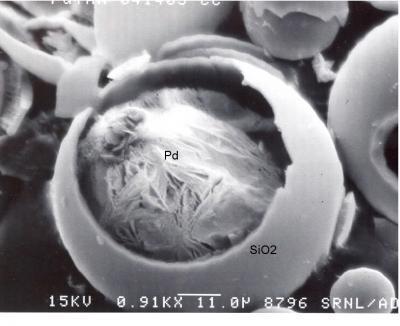Nanobiotechnology researchers seek ways to enable synthetic systems to take control of simple cellular activities when these are defective

When cells are no longer able to perform the tasks required of them by our body, the result is disease. Nanobiotechnology researchers will seek ways to enable synthetic systems to take control of simple cellular activities when these are defective. This requires transport systems capable of containing drugs and other substances and releasing them in a controlled manner at the appropriate moment and location.
The transportation system must be able to respond to its external environment in order to be able to receive the signal to unload its "cargo". A research team led by Frank Caruso from the University of Melbourne in Australia has now developed a micro-container capable of storing thousands of individual "cargo units" known as a "capsosome". These consist of polymer capsules in which liposomes have been embedded (liposomes, the entry in Wikipedia) to create subsections.
Today, the main type of nanocarrier used in the pharmaceutical field is a capsule: polymer capsules form stable containers that are semi-permeable and allow communication with the surrounding medium. However, these types are not suitable for transporting small dogs because they manage to escape from the contents. Liposomes are suitable for keeping small medical dogs; However, they are often unstable and impenetrable. The Australian researchers have now combined the advantages of these two systems into one modern system called capsosomes.
These systems are produced in several stages. First, a layer of polymers is adsorbed on top of tiny silica spheres. These polymers contain structural units to which cholesterol fragments are attached. Liposomes, which store enzymes inside, can be safely anchored to the cholesterol units and thus bind to the polymer layer. After that, more layers of polymers are added and then they are cross-linked by disulfide bridges to form a gel using extremely delicate cross-linking reactions developed specifically for this purpose. In the last step, the silica core is removed by eating without damaging the important charge.
Experiments with enzymes, as a model for an important cargo, showed that the liposomes remained intact and that the cargo did not leak out. Adding a detergent led to the release of the enzyme in its active form. Through the activation of the enzymatic reaction, which causes the color of the solution to change, it was possible to determine the number of liposome components in each polymeric capsule unit, about eight thousand.
"Since the capsosomes are biodegradable and non-toxic," says one of the researchers involved in the study, "they could also be suitable for use as organelles of artificial cells and as drug delivery systems." In addition, the researchers intend to wrap liposomes filled with a mixture of different enzymes together and equip them with unique "shelters" that will allow the controlled release of each enzyme separately at the desired location and time. This fact will also make it possible to use a sequence of enzymatic reactions for different catalytic processes.
